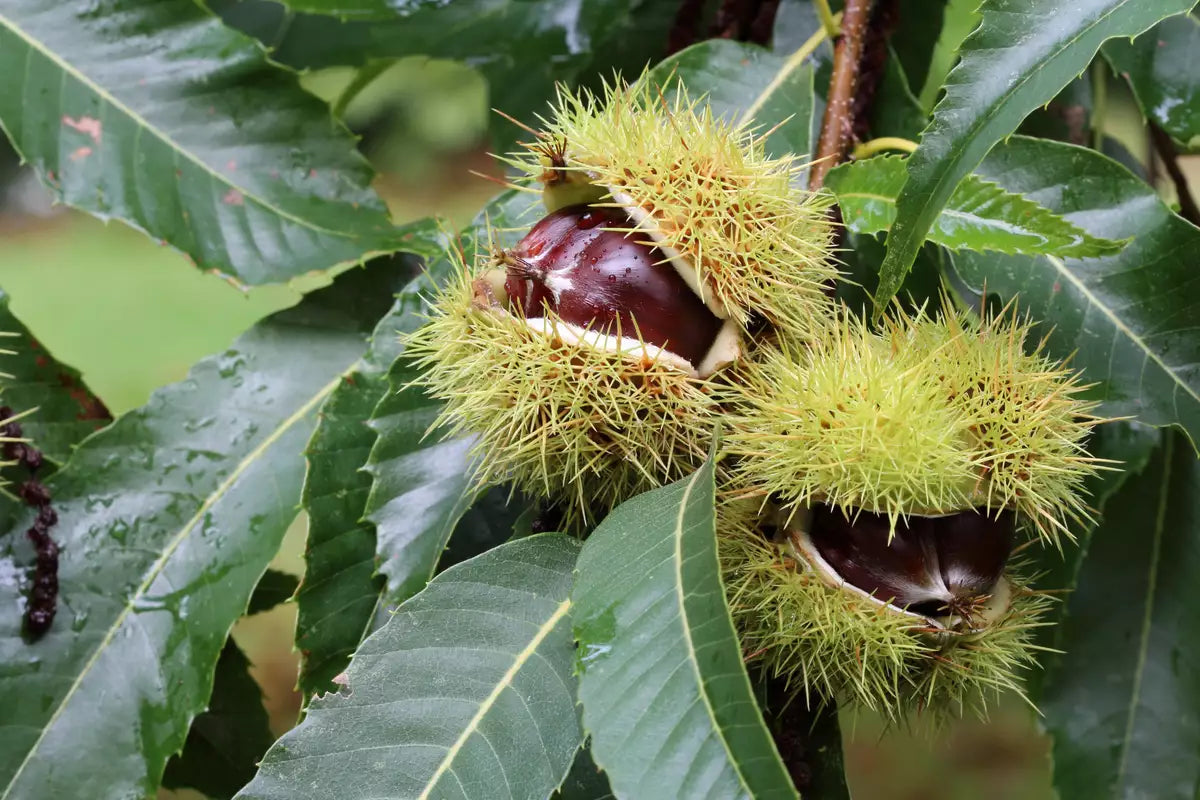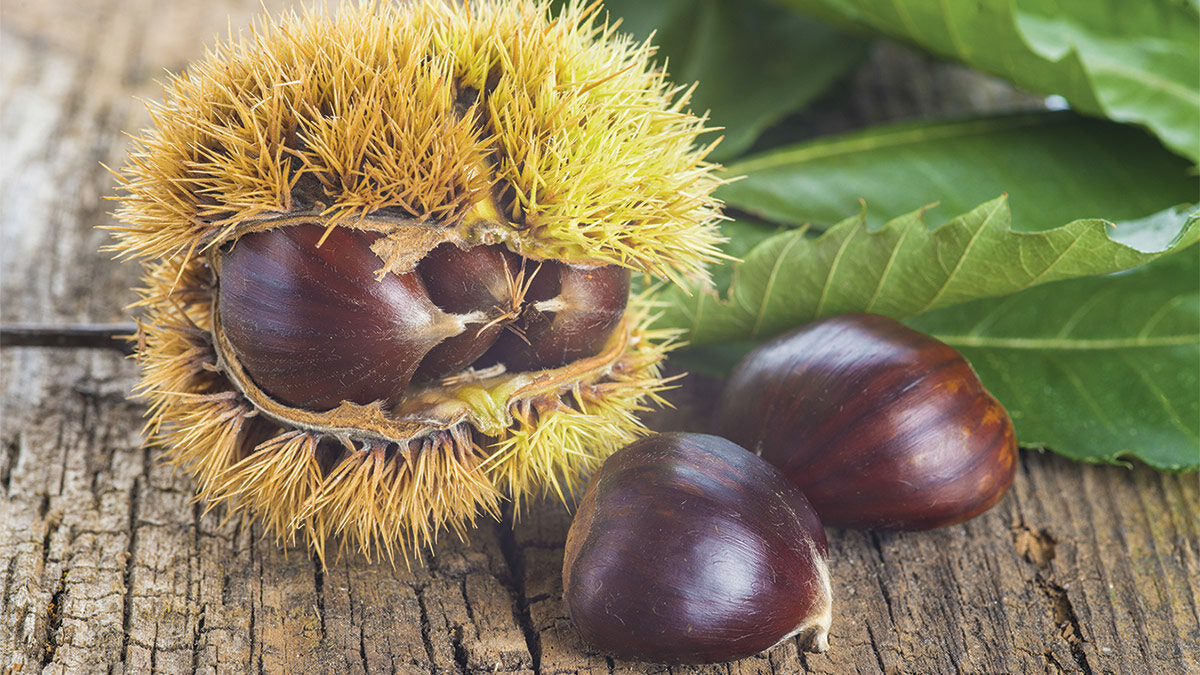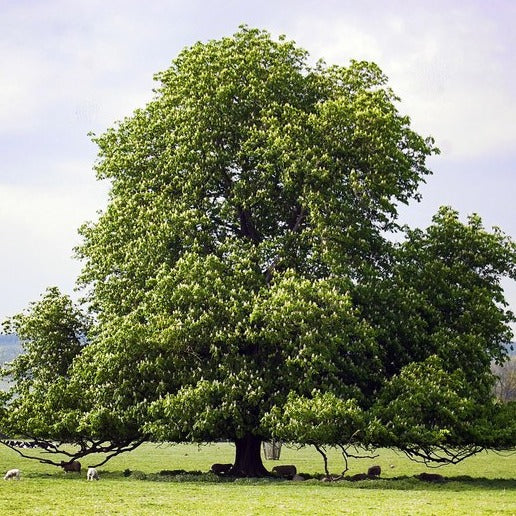Chestnut
Chestnut
Couldn't load pickup availability
American Chestnut (Castanea dentata)
Once one of the most important trees in eastern North America, the American chestnut was a towering canopy species and vital food source for people and wildlife alike. Fast-growing and long-lived, it produced sweet, starchy nuts in abundance and was known for its strong, rot-resistant wood. In forest ecosystems, chestnuts fed bears, deer, turkeys, and songbirds, and shaped Appalachian life for generations.
Though largely wiped out by chestnut blight in the early 20th century, American chestnuts persist in root sprouts and restoration efforts.
'Dunstan' Chestnut (Castanea mollissima × dentata)
The Dunstan chestnut is a resilient and productive hybrid that brings the legacy of the American chestnut back to life without the devastation of chestnut blight. A cross between American (Castanea dentata) and asian (C. mollissima) chestnuts, Dunstan trees combine the fast growth, tall form, and sweet nut quality of native trees with the disease resistance of their Asian parentage.
These trees grow quickly and begin producing nuts in as little as 3–5 years with proper care. In fall, they drop flavorful, easy-to-peel chestnuts beloved by both humans and wildlife. Ideal for food forests, silvopasture systems, and nut orchards, Dunstan chestnuts are cold-hardy, adaptable, and excellent for long-term perennial food production.
While not genetically identical to pure C. dentata, Dunstan chestnuts preserve much of the native form and function, and they play a vital role in restoring chestnut culture to eastern landscapes.
Details:
-
Height: 50–100 feet
-
Spread: 30–60 feet
-
Light: Full sun
-
Soil: Well-drained, slightly acidic
-
Growth rate: Fast
-
Edibility: Sweet, edible nuts with high starch content
-
Ecological value: Supports wildlife; important restoration species
-
Zones: 4–8
Share








